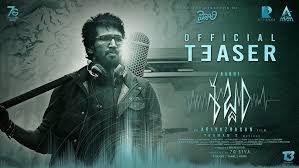South Indian thrillers have captivated audiences with their gripping narratives, intricate storytelling, and, most importantly, their hauntingly powerful music scores. Music composition in South Indian thrillers is an art form that blends traditional Indian music elements with modern techniques to heighten tension, evoke emotions, and immerse the audience in the cinematic experience. This article explores the artistry behind music composition in South Indian thrillers, the techniques used, and its impact on storytelling.
The Role of Music in South Indian Thrillers
Music in South Indian thrillers is more than just a background element; it is an integral part of storytelling. Composers strategically use soundscapes to:
- Build Suspense: Sudden silences, eerie background scores, and discordant notes create tension.
- Enhance Emotional Depth: Melodic motifs and minor key compositions evoke fear, anxiety, or anticipation.
- Drive Narrative Progression: Leitmotifs help signal character developments and plot twists.
South Indian composers like Ilaiyaraaja, A.R. Rahman, and Anirudh Ravichander have mastered the art of fusing classical ragas with electronic and orchestral arrangements to intensify storytelling.
Key Techniques Used in Music Composition
1. Use of Indian Classical Music
Many South Indian thriller scores are inspired by Carnatic music, employing specific ragas to evoke emotions. For instance:
- Raga Charukesi conveys mystery and suspense.
- Raga Hamsadhwani creates an eerie yet intriguing atmosphere.
2. Leitmotifs and Character Themes
A leitmotif is a recurring musical theme associated with a character or concept. In South Indian thrillers, composers assign unique musical motifs to villains, protagonists, or specific emotions to create a subconscious connection for the audience.
3. Experimental Sound Design
South Indian thrillers often incorporate unconventional soundscapes. Composers use:
- Synthesized sounds and reversed audio for unsettling effects.
- Natural environmental sounds like whispers or heavy breathing to enhance realism.
- Percussive rhythms inspired by traditional South Indian instruments like Mridangam and Ghatam to intensify action sequences.
4. Silence as a Musical Element
The strategic use of silence can be just as effective as a dramatic crescendo. Silence amplifies tension, making audiences more receptive to sudden sonic bursts, a technique often used in psychological thrillers.
5. Fusion of Western and Indian Elements
Many contemporary South Indian composers blend orchestral Western elements with native Indian sounds to create a rich, layered auditory experience. This fusion helps globalize the appeal of South Indian thrillers.
The Impact of Music on Audience Engagement
A well-crafted thriller soundtrack does more than accompany the visuals; it plays with audience psychology. Studies in film scoring suggest that suspenseful music triggers physiological responses such as increased heart rate and heightened focus. South Indian thrillers leverage this by synchronizing music with jump scares, emotional climaxes, and plot twists.
Additionally, strong musical themes ensure that even after leaving the theater, audiences carry the film’s essence through its haunting melodies.
Case Studies: Iconic Soundtracks in South Indian Thrillers
1. “Ratsasan” (2018) – Ghibran’s Psychological Score
Ghibran’s score for “Ratsasan” is a textbook example of how music can elevate tension. His mix of synthesized horror elements and eerie orchestration heightens the film’s psychological horror aspects.
2. “Anniyan” (2005) – Harris Jayaraj’s Multifaceted Composition
Harris Jayaraj blended opera, rock, and traditional Carnatic elements to reflect the protagonist’s split personality, making the music a narrative device in itself.
3. “Vikram Vedha” (2017) – Sam C.S’s Innovative Use of Percussion
The pulsating beats in “Vikram Vedha” create a sense of urgency, mirroring the cat-and-mouse chase between the leads.
The Future of Music Composition in South Indian Thrillers
The landscape of music composition is evolving with technological advancements and changing audience preferences. Here are some future trends:
- AI-Assisted Composition: Machine learning tools are aiding composers in generating unique soundscapes.
- Immersive Sound Technologies: Dolby Atmos and 3D sound mixing techniques will enhance cinematic experiences.
- Greater Global Collaboration: More South Indian composers are working with international artists, expanding their influence beyond regional cinema.
Music composition in South Indian thrillers is an evolving art that blends tradition with innovation to enhance storytelling. Whether through haunting leitmotifs, experimental soundscapes, or the fusion of diverse musical elements, composers play a pivotal role in shaping audience experiences. As technology and creativity continue to advance, the future of South Indian thriller music promises to be even more thrilling.
FAQ
1. Why is music important in South Indian thrillers?
Music enhances suspense, amplifies emotions, and serves as a narrative tool to deepen audience engagement.
2. Who are some notable composers in South Indian thrillers?
Some iconic composers include Ilaiyaraaja, A.R. Rahman, Anirudh Ravichander, Harris Jayaraj, and Ghibran.
3. What makes South Indian thriller music unique?
Its blend of Carnatic music, experimental sound design, and fusion of Western and Indian elements sets it apart.
4. What role does silence play in thriller soundtracks?
Silence builds tension and makes sudden musical bursts more impactful.
5. How has technology influenced South Indian thriller music?
Advancements like AI-generated compositions, immersive audio formats, and international collaborations are shaping the future of thriller music.
Explore the artistry behind music composition in South Indian thrillers. Discover how composers blend tradition, technology, and innovation to create suspenseful soundscapes.
